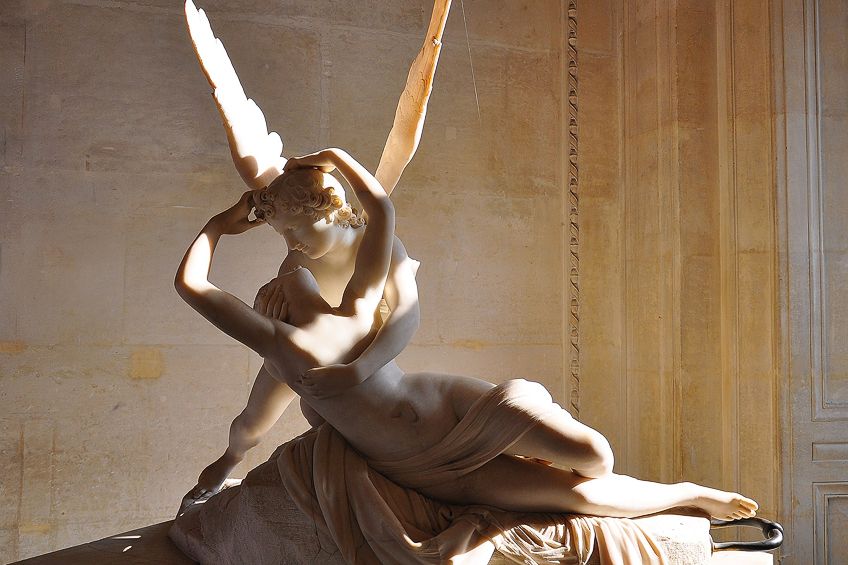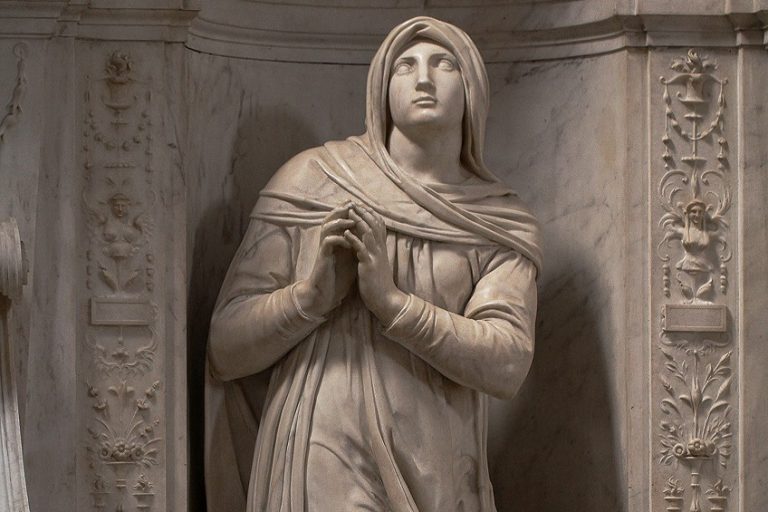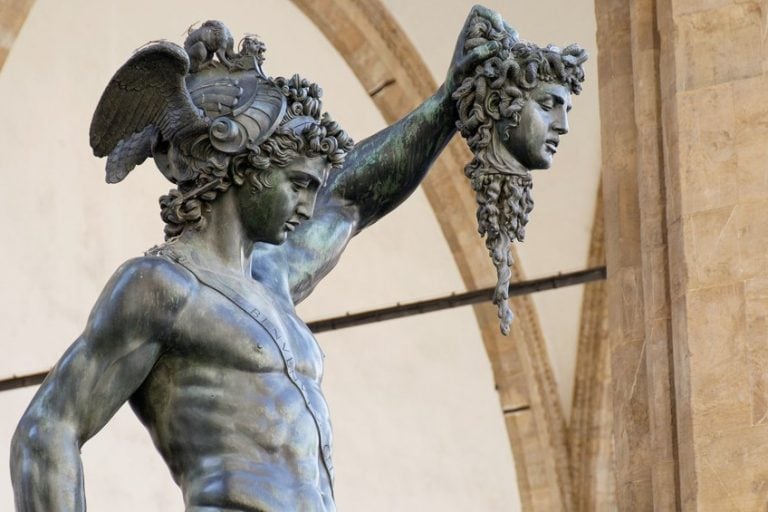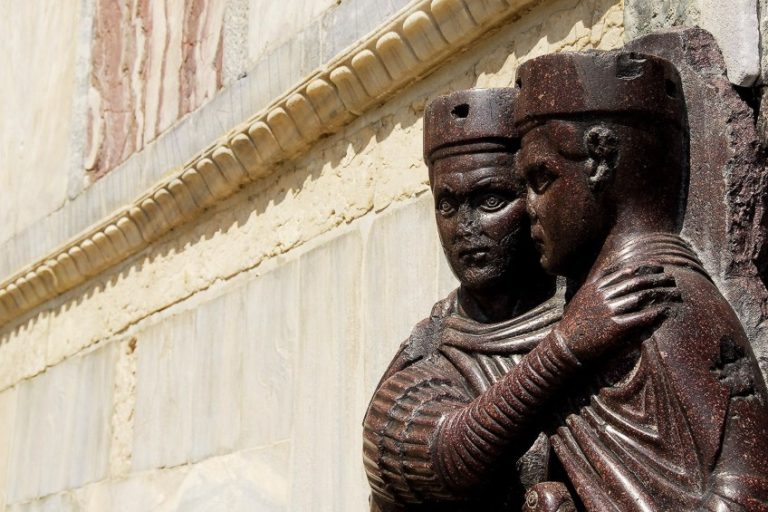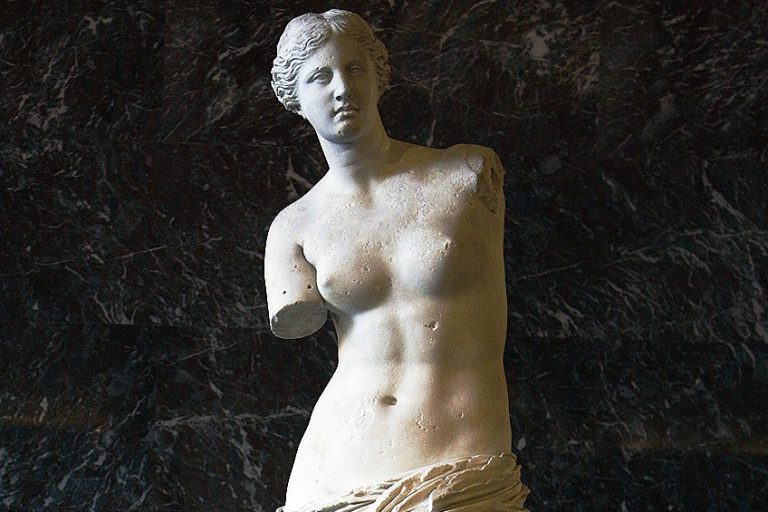Famous Neoclassical Sculptures – Top 18th-Century Neoclassical Statues
Neoclassical statues and sculpture first arose in the latter half of the 1700s and was a reactionary style that wanted to rid itself of some of the more frivolous design elements of the preceding Rococo style. Neoclassicism sculptures were heavily influenced by the work of the ancient Greeks and Romans. Advancements in the field of archaeology uncovered magnificent artworks from classic antiquity that the contemporary architects of the time wanted to emulate.
An Introduction to Neoclassicism Sculptures
During the 1700s, archeologists began to unearth ancient civilizations that revealed architecture and artwork that were greatly admired for their attention to detail and overall harmonious symmetry. Artists of the period were growing disdainful of the overly ornate Rococo style and wanted to return to the concepts and ideas that the Greco-Roman empires had espoused through their work.
Characteristics of Neoclassical Statues
Neoclassical sculptures are recognizable due to their embodiment of symmetry. The sculptures display perfect proportions and balance of composition. There is an overall sense of harmony of form and it is very apparent that the artists took great pains in creating works of art that reflected a deep understanding of the human form and anatomy.

Neoclassical statues ranged in size from true-to-life dimensions to sculptures that have been sculpted in monumental scale. The tone of the subject matter was always a serious one, exuding a deeply contemplative mood. Neoclassicism sculptures ranged in topical subject matter from historical heroes to mythological figures, deities, and famous contemporary people of the era.
While some sculptures could display idealized characteristics, many displayed an extremely naturalistic depiction of the subject.
Famous Neoclassical Sculptures
Neoclassical statues were mainly influenced by those of the Greco-Roman empires of the ancient past. Therefore they were not lacking in potential models for their own work. Many examples existed from classic antiquity, although most of them were already Roman replicas from even older Greek statues. Now we shall take a deeper look at some of the finest examples of Neoclassicism sculptures that have ever been created.
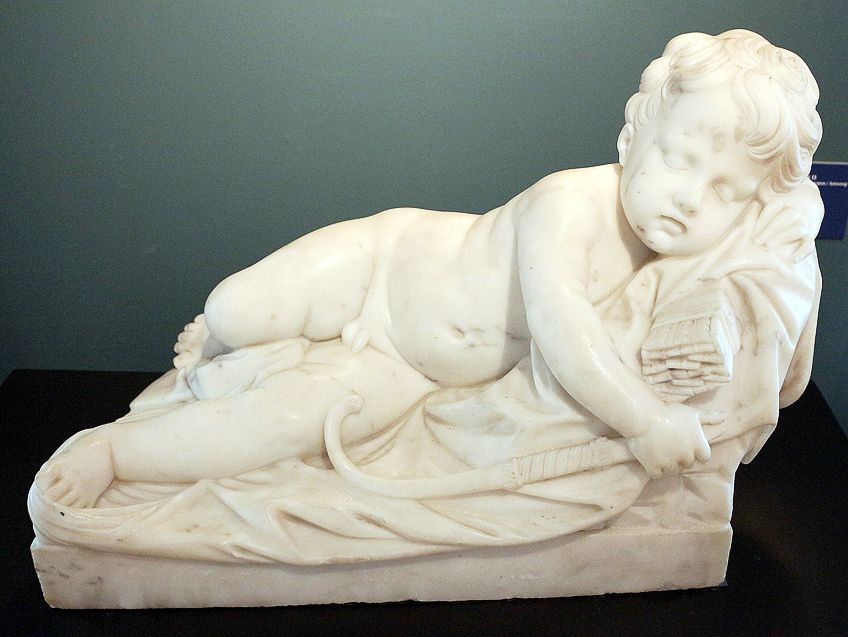
Mercury Attaching His Talaria (1740) by Jean-Baptiste Pigalle
| Sculptor | Jean-Baptiste Pigalle (1714 – 1785) |
| Year Created | 1740 |
| Height | 58 cm |
| Location | Louvre Paris |
Jean-Baptiste Pigalle was born in Paris in 1740, the son of a carpenter that worked for the king of France, Louis XIV. After his apprenticeship with Robert le Lorrain, went on to become a pupil of Lemoyne. He then entered the Prix de Rome, a competition held by the French Academy in which the first prize was to study in Rome for free for four years. He did not win the competition but decided that he would stay in Rome nonetheless.
Without any finances available to him, he walked from Paris to Rome, and there he tried in vain to make a living for four years just to pay for his lodging.
During that time he did manage to sell a few sculptures to people such as Guillaume Coustou as well as the French Ambassador to Italy. In 1741 he returned to Paris and set about attempting to receive approval from the French Academy of Painting and sculpture.
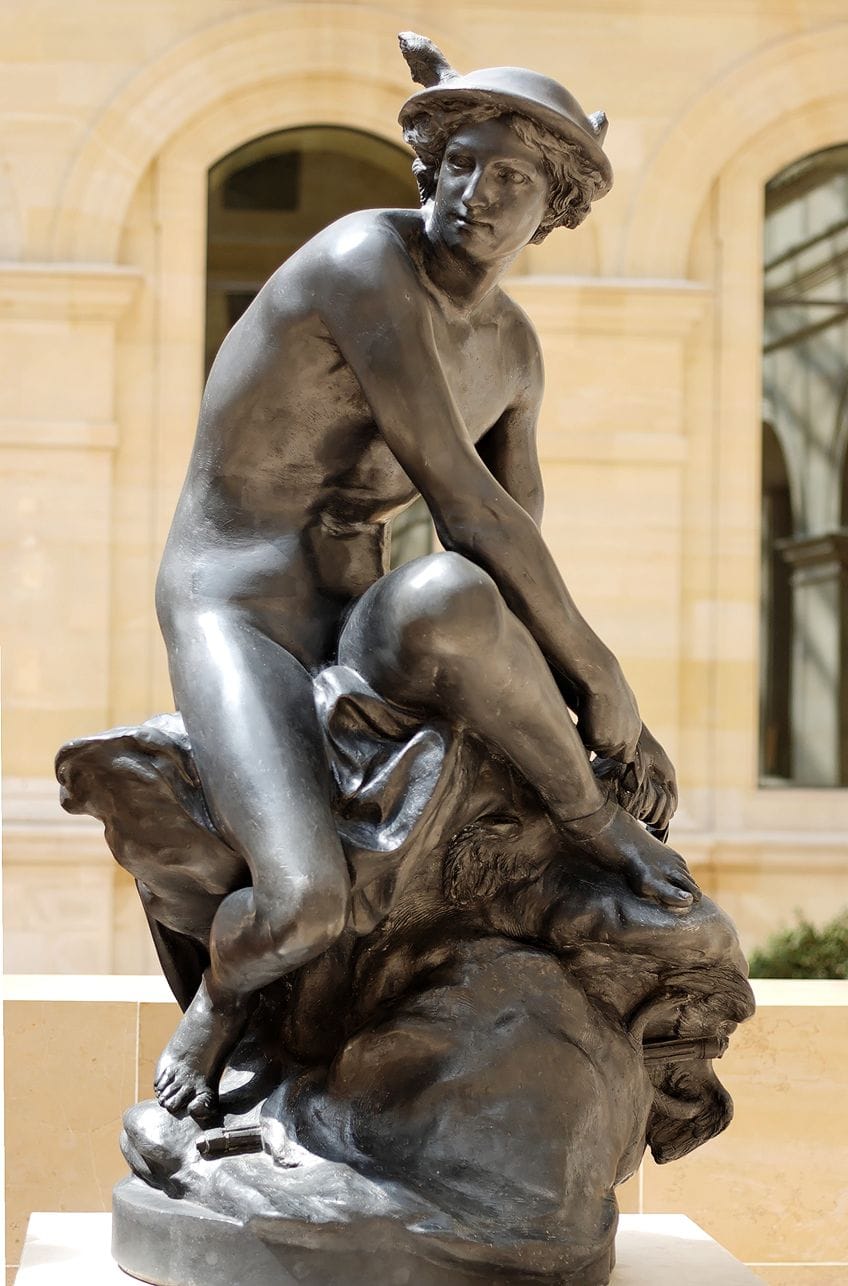
So, Pigalle sculpted a terracotta version of Mercury Attaching His Talaria and submitted it to the academy hoping for their approval. It is believed that Pigalle might have been inspired by the engravings of Jacob Jordaens, especially his picture from the 17th century entitled Mercury and Argus.
His sculpture displayed a great sense of dynamic potential in the crouching figure and exuded vitality and energy to such an extent that it became synonymous with speed. The academy responded by requesting him to recreate the sculpture using marble instead of terracotta. He did so and was accepted as a member of the academy in July of 1744.
The sculpture gained success instantly and was even given positive critique by Voltaire who was quoted as saying that it was comparable in quality to the finest Greek sculptures.
Portrait of Peter the Great (1770) by Marie-Anne Collot
| Sculptor | Marie-Anne Collot (1748 – 1821) |
| Year Created | 1770 |
| Height | 30 cm |
| Location | State Russian Museum, St. Petersburg |
Marie-Anne Collot was born in 1748 in France and was a sculptor in the Neoclassical style. She was a pupil of Etienne Falconet as well as his daughter-in-law. Her first work was as a model for the workshop belonging to Jean-Baptiste Lemoyne when she was only 15 years old. After that, she started to study at the workshop of Etienne Falconet. Over time she became his close friend as well as favorite student.
Her first sculptures were busts of her tutor’s friends such as the philosopher Diderot, which were sculpted out of terracotta.
In 1766 she would accompany Falconet to Russia upon the invitation of Catherine the Great. Catherine the Great desired to have an equestrian statue created of Peter the Great which would be situated in Senate Square in Saint Petersburg. This famous statue was known as the Bronze Horseman.

While there she began sculpting portraits of the noble people of the Russian court. They were blown away by the talent of the young 18-year-old. Catherine the Great ended up rejecting all three attempts at the tsar’s head that had been sculpted by Falconet. Marie-Anne had created her own version of the head of Peter the Great out of plaster, and it was this version that Catherine the Great would end up using for the design of the statue. The bust now resides at the State Russian Museum in Saint Petersburg.
Catherine the Great also requested that a bust of Peter the Great be sculpted out of marble. The marble bust is now housed at the State Hermitage Museum, also in Saint Petersburg.
Bronze Horseman (1782) by Étienne Maurice Falconet
| Sculptor | Étienne Maurice Falconet (1716 – 1791) |
| Year Created | 1782 |
| Height | 6 m |
| Location | Saint Petersburg, Russia |
The Bronze Horseman was sculpted by Étienne Maurice Falconet, a French sculptor. It is situated in the Senate Square and it depicts the Tsar of Russia, Peter the Great. Unveiled to the public in 1782, it was commissioned to be built by Catherine the Great. The name of the sculpture would inspire one of the most important works of literature in Russia, a poem by Alexander Pushkin entitled The Bronze Horseman.
To the people of Saint Petersburg, the statue is a symbolic representation of their beloved city, the second-largest in all of Russia.

A fascinating fact about the sculpture lies underneath the sculpture itself. The Thunder Stone is the name given to the massive pedestal of the statue. It is said to be the largest stone moved by humans and it originally weighed around 1500 tonnes before it was cut down to its current size in order to transport the massive stone from its original source.
Several fires broke out during the casting of the statue in 1775 when the mold broke and molten bronze escaped.
It would later have to be remodeled and cast once again. The statue took twelve years in total to complete. Excavation of the giant stone pedestal began fourteen years before it was finally unveiled. Thousands attended the unveiling ceremony except for the sculptor himself who had left Russia four years earlier due to a conflict caused by a misunderstanding between the two. The face of the statue was sculpted by Marie-Anne Collot, a young student of Lemoyne and Falconet.
Winter (1787) by Jean-Antoine Houdon
| Sculptor | Jean-Antoine Houdon (1741 – 1828) |
| Year Created | 1787 |
| Height | 144 cm |
| Location | Metropolitan Museum of Art, New York |
Jean-Antoine Houdon was a key figure among sculptors of Neoclassical sculptures. Born in France in 1787, he was very well renowned for his Neoclassical statues of prominent figures in contemporary history. He is known for his studies of people such as Napoleon, George Washington, as well as Voltaire. He would go on to become one of the most well-known French sculptors of the 18th century, despite barely being recognized in his lifetime for his sculptural achievements.
At times, the sculptor had also experimented with Rococo and Mannerist styles, but his style is mostly characterized by unpretentious Neoclassicism.
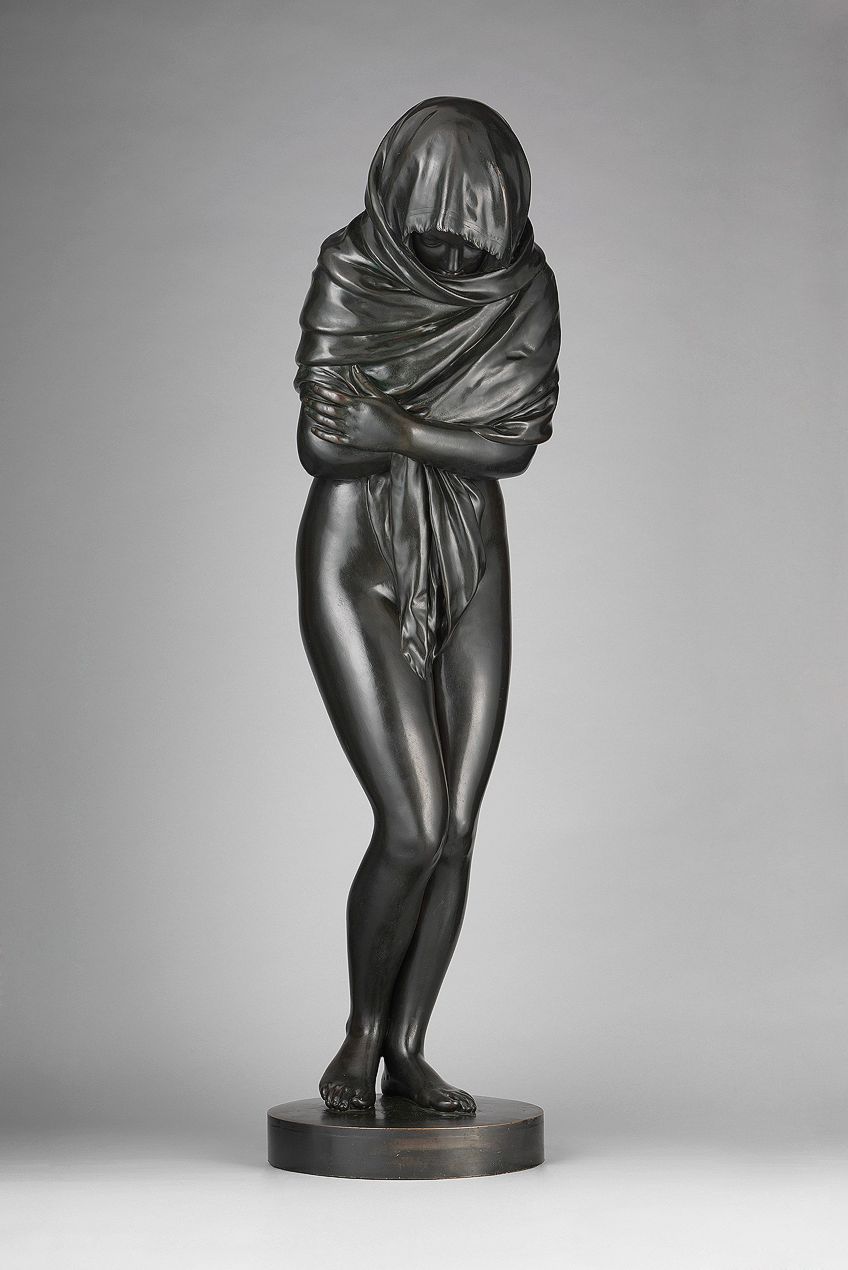
It is thought that the original composition for this figure may date back as far as 1781. It is regarded as one of his most striking nude figures and was one of a series of pendant figures that he wanted to sculpt that represented the various seasons, or rather two of the more extreme seasons, winter and summer. A small version of Winter sculpted from terracotta is housed at the Musée Fabre, Montpellier, and might be the first study that Houdon created on the subject.
The season Winter has been represented as a naked feminine figure with a shawl pulled over her head and torso, but in the process has left the rest of her body exposed to the elements and naked.
In contrast, his sculpture of Summer is depicted wearing a shift and holding a watering can and sheaf of wheat. At the Salon of 1783, marble versions of Winter were exhibited. The bronze version would be cast at a later stage in 1787. With this sculpture, Houdon was able to both reveal the alluring features of the beautiful female form, but was also able to convey to the viewer a sense of the bitter harshness of the cold season.
Psyche Revived by Cupid’s Kiss (1787) by Antonio Canova
| Sculptor | Antonio Canova (1757 – 1822) |
| Year Created | 1787 |
| Height | 155 cm |
| Location | Louvre Museum, Paris |
Colonel John Campbell commissioned Antonio Canova to create Psyche Revived by Cupid’s Kiss in 1787. It is considered to be a high point of Neoclassical sculpture yet it also displays characteristics of Romanticism, the emerging movement at the time. The sculpture captures a highly emotive moment when the god Cupid awakens Psyche with a kiss. Lucius Apuleius had written a novel titled The Golden Ass which is cited as being the source of inspiration for the story.
Two versions exist of the sculpture, one of which was acquired by Joachim Murat in 1800. This was the prime or earliest version of the sculpture.
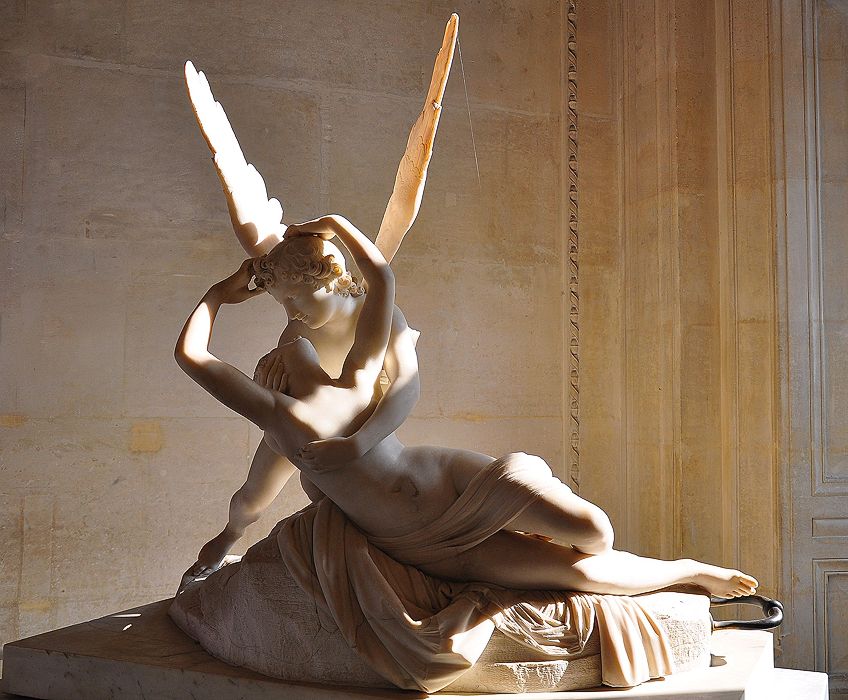
When Murat passed away the statue was moved to the Louvre Museum in Paris. The second version was acquired in 1796 by a Russian nobleman named Prince Yusupov. It would later be housed at the Hermitage Museum in Saint Petersburg. There is a full-scale replica of this version currently housed at the Metropolitan Museum of Art in New York City.
Canova’s carving technique allowed him to create a contrast between the elements surrounding them and the smooth and realistic appearance of their marble skin.
The rock on which they are perched is rough in texture, and the fabric which is draped over the skin further highlights the difference between the texture of the cloth and the silky smooth finish of the skin. The use of fine lines and curves is employed in a manner that adds a feeling of realism and texture to the hair and wings of the figures.
Dr. Anthony Addington (1790) by Thomas Banks
| Sculptor | Thomas Banks (1735 – 1805) |
| Year Created | 1790 |
| Height | 76 cm |
| Location | Victoria and Albert Museum |
Thomas Banks was originally an apprentice for a mason based in London, but at the same time, he also worked alongside Peter Scheemakers, who was a sculptor by trade. He then enrolled in the St. Martin’s Lane Academy’s life classes. While taking classes during a later period at the Royal Academy School in 1772, he found himself in the prestigious position of being the first sculptor to win the stipend that would pay for three years of study in Rome. He moved there with his wife and together they would end up staying for seven years.
His work is regarded as some of the most original Neoclassical sculptures in Britain. He was praised for not just following the fashion of classical revival but had a deep understanding of the spirit of the style.

His bust of Dr. Anthony Addington may appear very life-like and full of expression, but in reality, it was modeled from a death mask of the doctor. When he was still alive the doctor worked in the field of treating illnesses of the mind. Among his patients were prominent figures of society such as King George III. It is thought that his son commissioned the bust to be created in honor of his father. Thomas Banks had risen to some level of fame through his ideal sculptures and funerary monuments, and the bust of Dr. Anthony Addington was one of the very few portraits that he ever sculpted.
The Fury of Athamas (1794) by John Flaxman
| Sculptor | John Flaxman (1755 – 1826) |
| Year Created | 1794 |
| Height | 220 cm |
| Location | Ickworth Museum, Suffolk |
John Flaxman is regarded as one of the most prominent sculptors of his time. The Fury of Athamas was a labor of love for the sculptor and it took three years for him to complete it. It was commissioned by the 4th Earl of Bristol, Frederick Augustus Hervey, and was to be created for his home in Suffolk, but it was met with another fate when Napoleanic troops seized it while it was en-route to England. It was said to be a labor of love as the deal was not a financially good one for him. The marble alone cost him five hundred pounds to buy, while he had only been paid a total of 600 pounds.
The sculpture was based on the works of the Roman writer Ovid.

In the mythical tale, a king called Athamas kills his son, a rather tragic and terrifying subject for a sculpture. The sculpture depicts Athamas driven to madness due to the jealousy of Hera. He is depicted grabbing Learchus, his son, just before throwing him to his death. Ino, Athamas’ second wife, can be seen trying to intervene by lunging at the insane king. This group sculpture was mounted on a pedestal made from wood that had been painted white.
The patron for the sculpture had initially shown interest in an earlier work of Flaxman’s, which was a bas-relief of Zethus and Amphion and was sculpted out of terracotta. His idea was to commission a marble version of the sculpture. However, Flaxman was able to convince the Earl to agree to a group.
This decision would probably end up working against him though as he did not get paid extra for the larger size marble that the group would require, and after his expenses and material costs only walked away with fifty pounds.
Hebe (1796) by Antonio Canova
| Sculptor | Antonio Canova (1757 – 1822) |
| Year Created | 1796 |
| Height | 160 cm |
| Location | National Gallery of Berlin |
Antonio Canova was born in Venice in 1757 and his artistic career began very early in life. When he was a child he was taught how to sculpt and paint, and he was just thirteen years of age when he became a pupil of Giuseppe Torretto. He started to receive his first commissioned work three years later at the age of only sixteen. His patrons at this time were mostly senators from the Republic of Venice. During the Napoleonic occupation, many artworks had been returned to France and he was made supervisor for the task.
One of his most famous Neoclassical sculptures is the strikingly beautiful Hebe statue made in 1796. In this fine example of Neoclassical sculpture, Hebe can be seen treading down gracefully from the heavens, bearing her cup, a symbol of the goddess of youth. Her feminine gesture represents the embodiment of her generous spirit, as she pours from the goblet that contains the youthful elixir of life.
Her elegantly flowing body has been sculpted out of marble, which emphasizes and enhances the metal from which the containers are made.

The clothing on her body is created to look as if it is revealing what was intended to be hidden, the garments wrap around her legs, accentuating their form in the process. The sculptor’s work was created towards the last years of a tradition in which aesthetic appearances of the whole were appreciated and valued more than the effective execution of individual elements. It was also still a period when sculptors could portray elemental non-plastic notions such as the breeze which is hinted at through the alluded motion of the fabric.
Statue of Achilles (1822) by Richard Westmacott
| Sculptor | Richard Westmacott (1775 – 1856) |
| Year Created | 1822 |
| Height | 18 ft |
| Location | Hyde Park |
Richard Westmacott began his artistic career studying with his father in London. In 1793 he moved to Rome to study further under the Italian Neoclassical sculptor Antonio Canova. There he dedicated his time to studying classical sculpture and his work throughout his life reflected his personal preference for pagan subject matter rather than the dominant Christian of the period. That same year he won a competition held by the Florentine Academy of Arts.
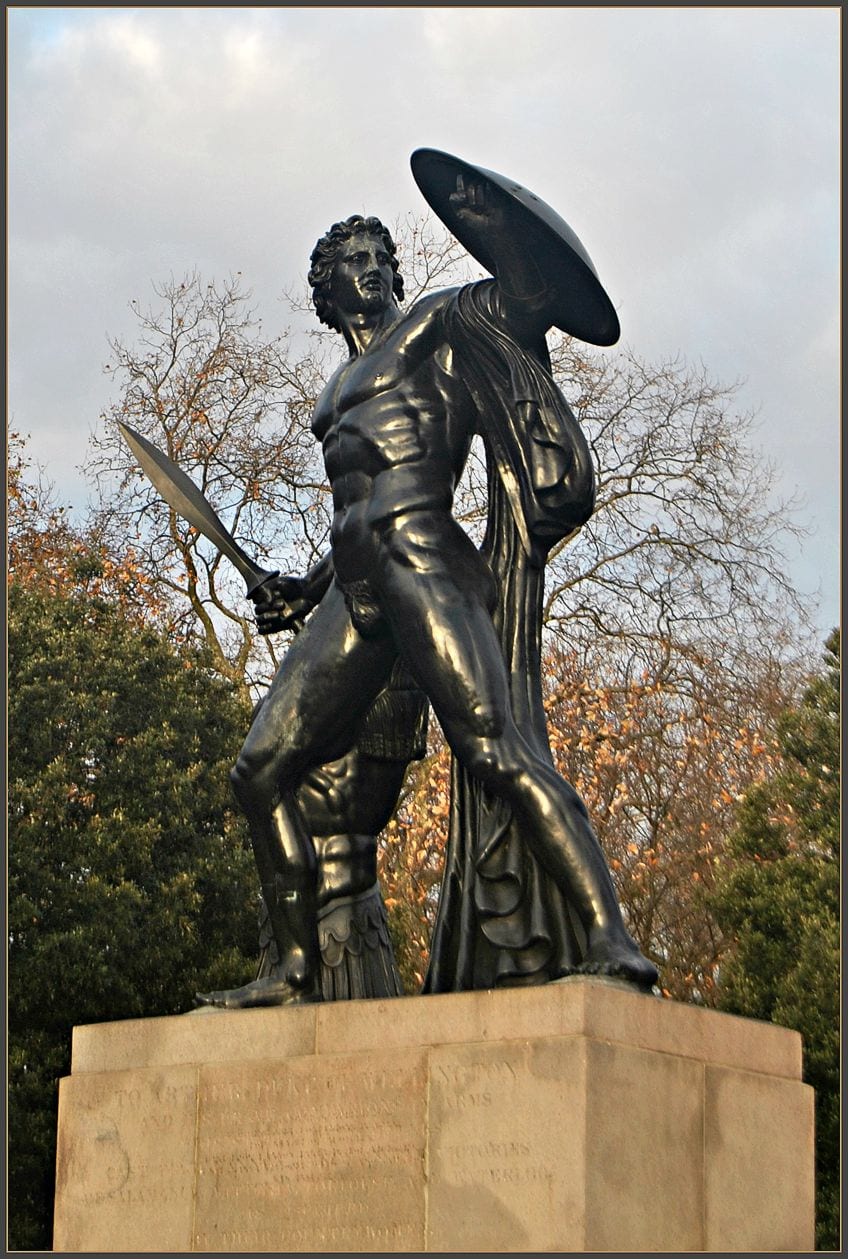
His sculpture the Statue of Achilles depicts the Greek mythological hero of the Trojan War. It was ordered to be built by King George III and was built to commemorate Arthur Wellesley, politician, and soldier as well as the First Duke of Wellington. The 18-foot statue was unveiled on the 18th of June 1822.
The sculpture was the first to be displayed in Hyde Park and is situated close to the Queen Elizabeth Gate. It was commissioned by the Ladies of England, an upper-class society of English patriots.
The sculptor Richard Westmacott used 33 tons of bronze to make the sculpture, which he sourced from cannons that had been captured during the French campaigns led by Wellington. The head of the statue is modeled after the Duke and the body is said to be based on a Roman figure situated in Monte Cavallo in Italy. Although the sculpture was originally depicted completely naked, a fig leaf was added due to public outrage soon after it was unveiled.
Jason with the Golden Fleece (1828) by Bertel Thorvaldsen
| Sculptor | Bertel Thorvaldsen (1770 – 1844) |
| Year Created | 1828 |
| Height | 242 cm |
| Location | Thorvaldsen Museum, Copenhagen |
Bertel Thorvaldsen was a sculptor born in Copenhagen in 1770. When he was only eleven years old he was already a member of the Royal Danish Academy of Art. At the academy, he received numerous awards, one of which was a sum of money that would allow him to travel to Rome where he would be able to further his education. It was in Rome that he would open a large workshop from which gained much fame through supplying artwork to his patrons all around Europe.
Thorvaldsen first created a life-size version of Jason with the Golden Fleece in 1803, sculpted out of clay. The marble version, which stands at a height of 242 cm, was only finished in 1828.
The statue represents the mythological character of Jason of the Argonauts who was sent to find the Golden Fleece. The initial clay model was created for the Copenhagen Academy as a submission meant to demonstrate his advancement as a sculptor. A rich patron from England, Thomas Hope, would subsequently commission Thorvaldsen to sculpt a version from marble.
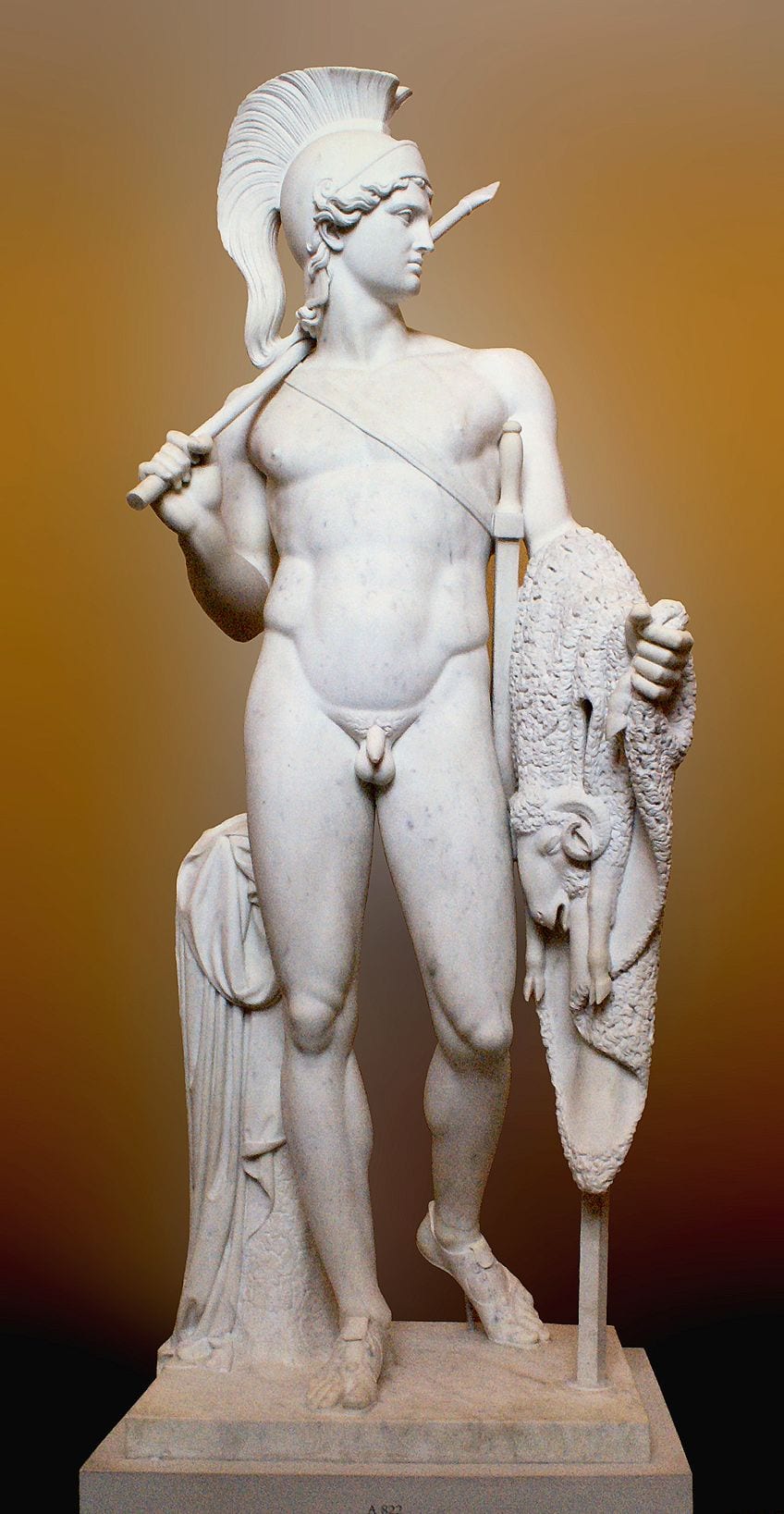
This sculpture would be a great factor in assisting Thorvaldsen to break through as an artist. It is believed to be inspired by the drawings of Asmus Jacob Carstens thematically, but the figure itself draws much inspiration from other classic sculptures like Doryphoros and Apollo Belvedere. The sculptor’s choice in subject matter was the result of his increasing knowledge of ancient cultures and history due to the influence of Jorgen Zoëga, a Danish archeologist and scientist. The sculpture is greatly admired for its intense and sharp rhythmic lines. It was added to the Danish Culture Canon in the early 2000s.
Today we have learned how Neoclassical statues first began to surface in the 1750s and was a reactionary movement that sought to rid itself of the more frivolous design elements of the preceding Rococo and Baroque style. Neoclassicism sculptures were heavily influenced by the work of the ancient Greeks and Romans. Developments in the field of archeology and uncovered magnificent artworks from classic antiquity that the contemporary architects of the time wanted to emulate.
Frequently Asked Questions
What Led to the Rise in Neoclassicism Sculptures?
In the years of the mid-18th century, archeologists in Europe started to uncover ancient lost civilizations. These ancient lost cultures of antiquity revealed architecture and artwork that had not been seen for years. These lost wonders of architectural splendor were hugely appreciated and were studied for their attention to detail and overall harmonious symmetry. Artists of the period were growing disdainful of the overly ornate Baroque and Rococo style and wanted to return to the concepts and ideas that the Greco-Roman empires had espoused through their work.
What Are a Few Characteristics of Famous Neoclassical Sculptures?
Neoclassical sculptures all share common features such as the love of symmetry, these sculptures displayed perfect proportions as well as a balance of composition. Neoclassical statues ranged in size from true-to-life dimensions through to monumental scale. Neoclassicism sculptures ranged in subject matter from mythological figures to historical heroes, deities, and famous contemporary people of the era. While some sculptures could display idealized characteristics, many displayed an extremely naturalistic depiction of the subject.
Isabella studied at the University of Cape Town in South Africa and graduated with a Bachelor of Arts majoring in English Literature & Language and Psychology. Throughout her undergraduate years, she took Art History as an additional subject and absolutely loved it. Building on from her art history knowledge that began in high school, art has always been a particular area of fascination for her. From learning about artworks previously unknown to her, or sharpening her existing understanding of specific works, the ability to continue learning within this interesting sphere excites her greatly.
Her focal points of interest in art history encompass profiling specific artists and art movements, as it is these areas where she is able to really dig deep into the rich narrative of the art world. Additionally, she particularly enjoys exploring the different artistic styles of the 20th century, as well as the important impact that female artists have had on the development of art history.
Learn more about Isabella Meyer and the Art in Context Team.
Cite this Article
Isabella, Meyer, “Famous Neoclassical Sculptures – Top 18th-Century Neoclassical Statues.” Art in Context. September 16, 2021. URL: https://artincontext.org/famous-neoclassical-sculptures/
Meyer, I. (2021, 16 September). Famous Neoclassical Sculptures – Top 18th-Century Neoclassical Statues. Art in Context. https://artincontext.org/famous-neoclassical-sculptures/
Meyer, Isabella. “Famous Neoclassical Sculptures – Top 18th-Century Neoclassical Statues.” Art in Context, September 16, 2021. https://artincontext.org/famous-neoclassical-sculptures/.


